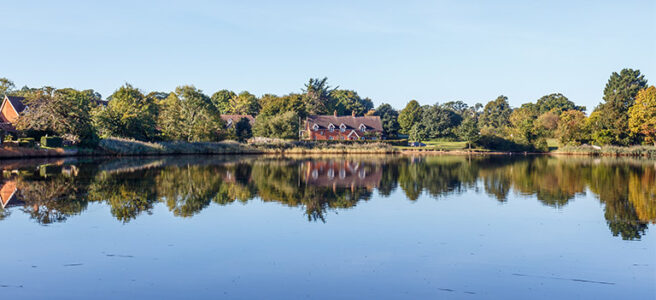Set in the south-east of the New Forest National Park, you will never pass Beaulieu on the way to anywhere because this little village is off the beaten track. It is a stunningly picturesque historical gem, thought by many to be the prettiest village in the New Forest.
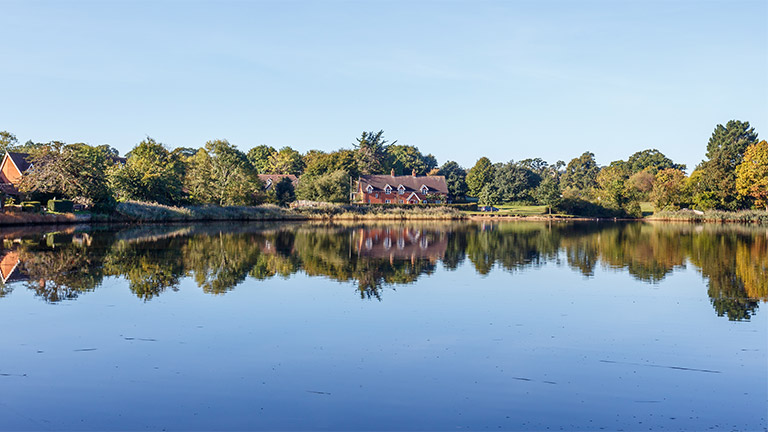
With no cattle grids, Beaulieu is a favourite hangout for the famous free-roaming New Forest ponies and groups of curious donkeys to gather. They are often seen pootling in and around the village and up and down the high street, pausing under trees and shop doorways taking shade from the sun.
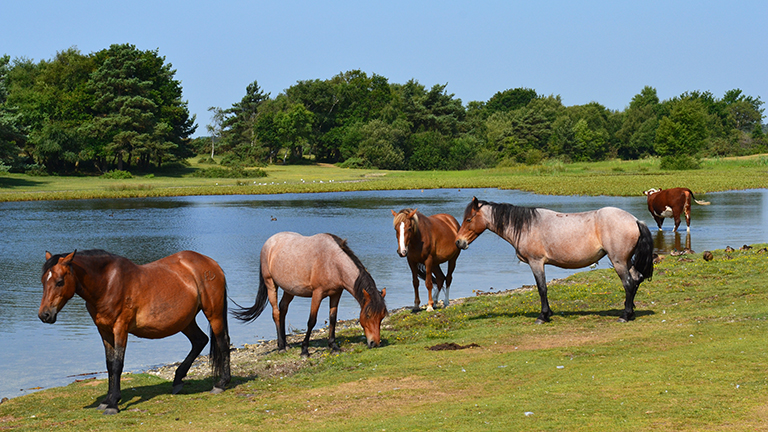
The Beaulieu river, woods and surrounding forest are seriously pretty, teeming with birds and wildlife with year-round interest. Spring bounces into life with swathes of bluebells and birdsong; summer heralds the arrival of colourful blooms and gentle river traffic. Come autumn there’s a vibrant fire of colour from the falling leaves which then turn to crisp winter days of a magical wonderland, embracing the villages’ enchanting architecture.
On your way into Beaulieu, you may want to pause for a peek at the classic cars on sale at Beaulieu Garage. A little further on is The Montagu Arms which foodie aficionados will love for sublime culinary creations in the award-winning fine dining restaurant, ‘The Terrace’. Turn right over the cobbles to the narrow high street which is lined with small but handsome brick dwellings dating from the 17th Century. Some are private homes and others tastefully converted into small artisan shops and stores. Spend time exploring the Beaulieu Chocolate Studio, Belle and Blossom florists, art gallery, gift shop, village stores and two tea rooms. At the top of the high street is Fairweathers Garden Centre, which is a must for lovers of blooms, plants and gifts and furnishings for a gorgeous garden, as well as a popular café.
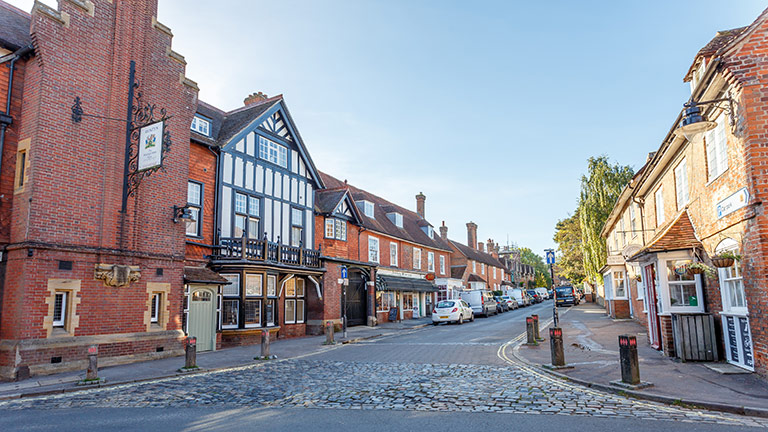
The village name derives from the French word ‘beau lieu’ meaning ‘beautiful place’. Time has not hindered the attractiveness of Beaulieu with modern additions of concrete or neon lights. Beaulieu appears in parts much as it did back in the 13th Century when Cistercian monks first arrived and formed Beaulieu Abbey. It continued as an Abbey until 1538 when Henry VIII rampaged the country in his dissolution of the monasteries and sold the abbey and its land to Thomas Wriothesley, 1st Earl of Southampton, who was an ancestor of the current owner, Lord Montagu, whose family have lived there since 1538. The Abbey nowadays is a fascinating ruin forming part of a picture-postcard view from the lawns on the northern edge of the large mill pond as you enter the village.
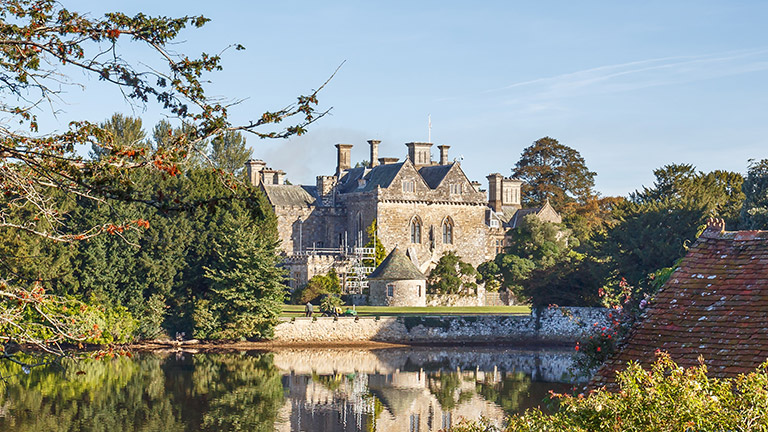
The area surrounding Beaulieu village comes under the vast 700 acre Beaulieu Estate which owns and manages homes, businesses, and farms. Visitors flock to Beaulieu to visit the world-famous National Motor Museum, Palace House, and gardens. The Palace House was built as an extension of the original Abbey’s gatehouse. It’s a fascinating building to visit and surrounded by walks and colourful themed gardens which include a flower garden, wilderness garden, tree carvings, kitchen garden and topiary garden inspired by the tales of Alice in Wonderland. The Beaulieu National Motor Museum was founded in 1952 by Lord Montagu in memory of his late father. You do not need to have a fascination with cars to enjoy the exhibitions and displays of more than 285 cars, motorbikes and vehicles dating from 1875 up to modern-day. Highlights include land speed braking and racing cars, the World of Top Gear, a special exhibition of cars from film and TV – think Mr Bean’s Mini, James Bond’s cars, Del Boy’s yellow three-wheeler and the blue Ford Anglia from Harry Potter! For children, there is also an enormous wooden palace play area complete with secret staircase and passages, bridge, clock tower and a trick bookcase. Earmark a full day to look around everything as there is so much to see and do.
A guide to Beaulieu would not be complete without mentioning the magnificent Beaulieu River. It is a tidal river flowing from The Solent to feed the huge mill pond in the village, and privately owned by the Beaulieu estate. As you would imagine in this ancient corner of the south coast, it has a rich history of smuggling. Nowadays the river is a mecca for birds and wildlife including resident seals! New Forest Activities in the village high street offer escorted tours of Beaulieu River in kayaks or big three-seat Canadian canoes pointing out wildlife, interesting facts, heritage, and history as you gently paddle along.
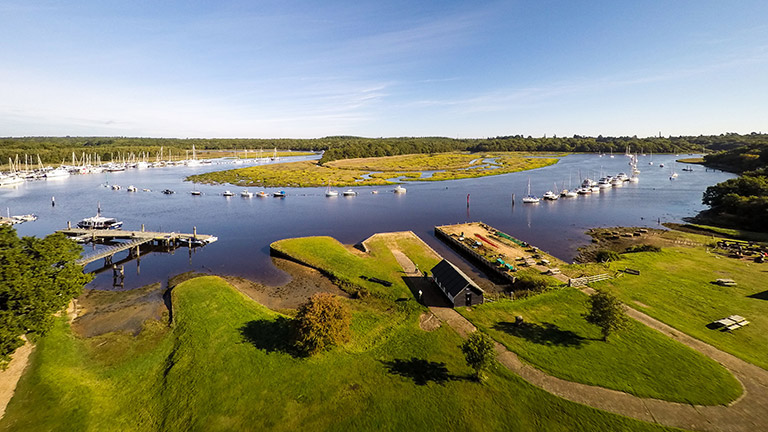
Two miles along the river is another of the New Forest’s big attractions – Bucklers Hard, an 18th-century shipbuilding village which is now a living museum. This petite hamlet was created as a refinery in the early 1800s for imported sugar from West Indies, but soon became a wood shipbuilding yard for over a hundred years. Trees from the forest were felled in great numbers to make substantial Naval warships in the Battle of Trafalgar, including Nelson’s Agamemnon. By the late 1900s, the building of iron vessels with steam meant orders were in steep decline, and the village and river reinvented themselves as a destination for day trips. Bucklers Hard museum chronicles the village’s history and how the second world war saw the Bucklers Hard village and Beaulieu River alive once more in the production and transport of motor torpedo boats, landing docks and pontoons for the D-Day landings. The village comes alive in the holidays with staff taking roles dressed and acting as historical characters who lived and worked in the village in its shipbuilding heyday. Visit them in their homes for a peek around the conditions they lived in and have a chat about everyday life. Grab lunch in The Master Builders pub or take a picnic and sit on the riverbanks, watching the pleasure boats quietly and slowly glide past.
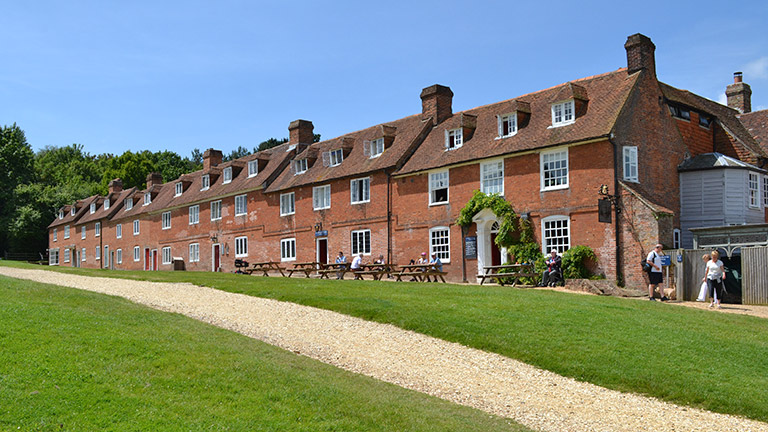
New Forest Cottages have a portfolio of over 150 properties in the area. Click here to see our full range of holiday cottages in Beaulieu.

